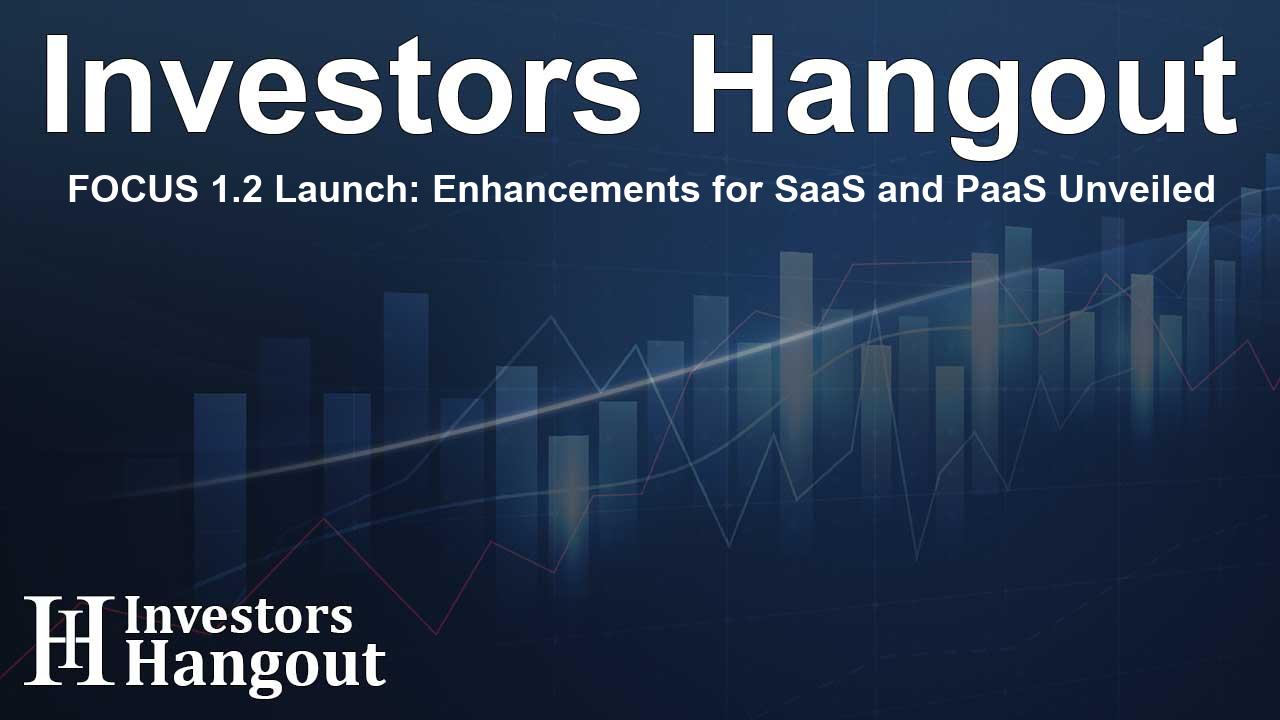FOCUS 1.2 Launch: Enhancements for SaaS and PaaS Unveiled

FOCUS 1.2 Now Available: A Game Changer in Cloud Billing
The FinOps Foundation recently announced the release of FOCUS 1.2, a significant step forward in the realm of cloud cost and usage management. This new version aims to unify billing formats and enhance the ability to manage costs across various platforms, particularly focusing on SaaS and PaaS environments.
Introduction of SaaS and PaaS Support
FOCUS 1.2 introduces the inclusion of Software as a Service (SaaS) and Platform as a Service (PaaS) billing data into its unified framework. This means that organizations can now monitor and manage their spending more effectively across these critical technology areas. This improvement not only consolidates data but also minimizes the likelihood of encountering duplicate charges, helping finance teams operate more efficiently.
Key Features of FOCUS 1.2
One of the standout features of this update is the invoice ID column, which ties each data entry directly to the relevant provider invoices. This enhancement simplifies the month-end close and chargeback processes, making financial tracking smoother than ever.
Enhanced Data Granularity
FOCUS 1.2 refines cost allocation practices by introducing greater granularity with new billing account and sub-account identifiers. This development allows companies to more accurately allocate expenses to specific departments or projects, leading to improved financial accountability.
Impact on Cloud Financial Management
The significance of adopting FOCUS 1.2 becomes clearer as organizations navigate increasingly complex multi-cloud and SaaS environments. As J.R. Storment, Executive Director of the FinOps Foundation, noted, this update embodies the rapid growth and evolution of FinOps practices, addressing the need for effective spend management across various technology platforms.
Unified Cloud+ Reporting
In an ecosystem where cloud costs are ballooning, unified reporting becomes crucial. FOCUS 1.2 allows finance professionals to consolidate SaaS, PaaS, and traditional cloud costs into a single reporting structure. This comprehensive view enables better decision-making and increases transparency in financial operations.
Multi-Currency Normalization
FOCUS 1.2 also addresses the challenges of managing expenses across different currencies. With its multi-currency normalization feature, organizations can convert mixed datasets into a single currency format, promoting straightforward budgeting and profit-loss (P&L) analyses. This function ensures that exchanges are auditable, providing a layer of reliability when reviewing financial results.
Invoice Reconciliation and Chargeback
This update enhances the chargeback and reconciliation process by allowing businesses to directly associate every charge, credit, or refund with its corresponding provider invoice ID. Accurate allocation of shared costs to distinct business units is now easier, promoting clarity and precision in financial reporting.
Analytics and Metrics
The introduction of advanced analytics capabilities in FOCUS 1.2 allows organizations to calculate cost-per-action metrics across different providers. This helps to highlight high-density spending areas, enabling faster identification of potential savings opportunities. Metrics such as cost-per-GB stored or cost-per-user provide practical insights for efficient budget management.
The Community and Industry Support
FOCUS has seen significant traction since its inception, gaining adoption from major cloud service providers including AWS, Microsoft, Google Cloud, and Oracle Cloud. As a result, FinOps practitioners worldwide are harnessing FOCUS to derive insights that drive smart decisions regarding technology use.
Conclusion
As FOCUS 1.2 continues to expand its features and maintain community involvement, it firmly positions itself as the go-to solution for cloud financial management. The new capabilities in SaaS and PaaS support, alongside improved invoice reconciliation and multi-currency normalization, promise to enhance how organizations understand and optimize their technology spending.
Frequently Asked Questions
What is FOCUS 1.2?
FOCUS 1.2 is an updated version of the FinOps Open Cost and Usage Specification, which includes new features for better cloud financial management.
What new features does FOCUS 1.2 offer?
New features include support for SaaS and PaaS billing, invoice reconciliation, multi-currency normalization, and enhanced cost allocation granularity.
How does FOCUS 1.2 improve cost management?
FOCUS 1.2 allows for unified reporting of costs across various cloud services, streamlining financial analysis and boosting accountability.
Why is multi-currency normalization important?
This feature allows organizations to convert various currencies into a single format for accurate budgeting and financial reporting.
Who supports FOCUS?
FOCUS is supported by major cloud service providers and a global community of FinOps practitioners dedicated to optimizing cloud spending.
About The Author
Contact Evelyn Baker privately here. Or send an email with ATTN: Evelyn Baker as the subject to contact@investorshangout.com.
About Investors Hangout
Investors Hangout is a leading online stock forum for financial discussion and learning, offering a wide range of free tools and resources. It draws in traders of all levels, who exchange market knowledge, investigate trading tactics, and keep an eye on industry developments in real time. Featuring financial articles, stock message boards, quotes, charts, company profiles, and live news updates. Through cooperative learning and a wealth of informational resources, it helps users from novices creating their first portfolios to experts honing their techniques. Join Investors Hangout today: https://investorshangout.com/
The content of this article is based on factual, publicly available information and does not represent legal, financial, or investment advice. Investors Hangout does not offer financial advice, and the author is not a licensed financial advisor. Consult a qualified advisor before making any financial or investment decisions based on this article. This article should not be considered advice to purchase, sell, or hold any securities or other investments. If any of the material provided here is inaccurate, please contact us for corrections.
